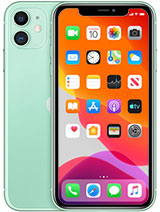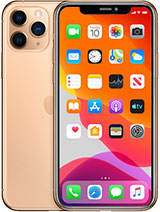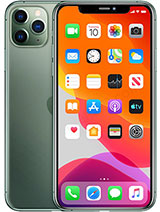iPhone 11 Parts
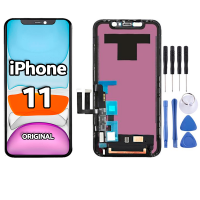
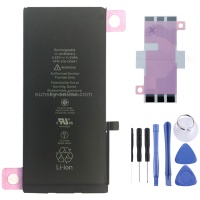
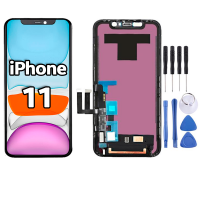
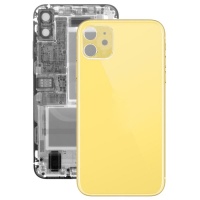
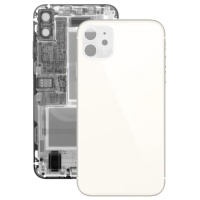
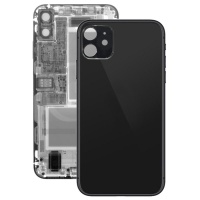
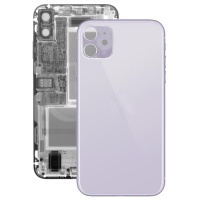
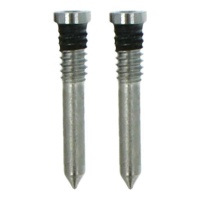
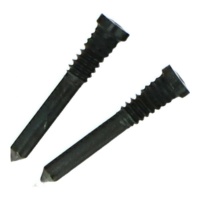
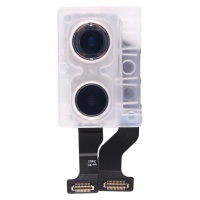
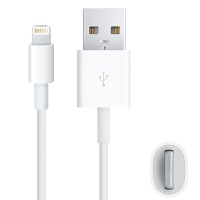
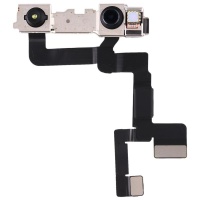
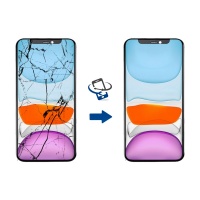
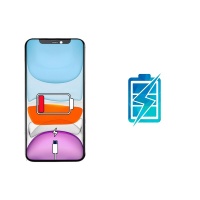
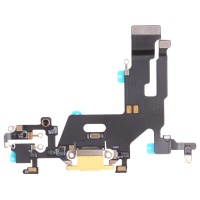
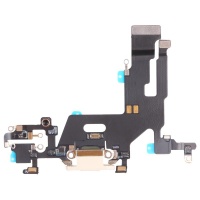
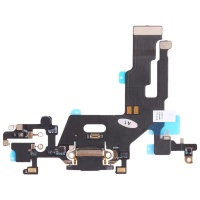
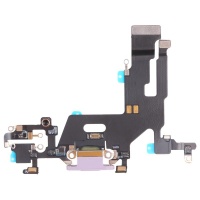
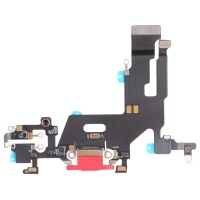
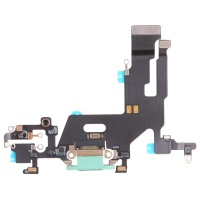
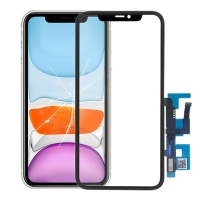
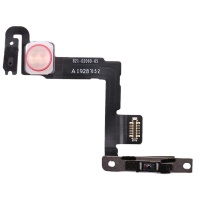
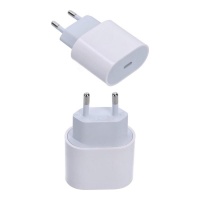
- Your iPhone 11 Can Be Fixed: The Ultimate Guide to Spare Parts
- The iPhone 11's Screen: The Heart (and Face) of Your Mobile
- Understanding the Technology: LCD vs OLED
- Types of iPhone 11 Replacement Screens in Detail
- 1. TFT (Thin-Film Transistor) Screens
- 2. INCELL Screens
- 3. OLED (Hard and Soft) Screens
- 4. Original or Refurbished (OEM) Screens
- The Matter of "True Tone" and the "Non-Genuine Display" Message
- The iPhone 11 Battery: Don't Let It Die on You Halfway Through the Day! 🔋
- Understanding Battery Degradation
- How to Know if Your iPhone 11's Battery is on its Last Legs?
- What are OEM Batteries without a Logo? The Smart Choice
- A Detailed Guide to Changing the iPhone 11's Battery
- Back Glass for iPhone 11: Renew its Look and Protection
- The Complexity of Changing the Back Glass
- Other Key Spare Parts and Common Faults for the iPhone 11
- Charging Port Connector (Dock Flex) for iPhone 11
- iPhone 11 Cameras
- Rear Camera Module
- Front Camera and the Face ID Dilemma
- Earpiece Speaker and Sensors
- Power Button and Flash for iPhone 11
- Bottom Screws (Pentalobe)
- Software Problems: Are You Sure It's a Hardware Fault?
Your iPhone 11 Can Be Fixed: The Ultimate Guide to Spare Parts
Hello there! If you've found your way here, itís highly likely your faithful iPhone 11 needs a bit of TLC and a new part. 💔➡️❤️ Don't you worry, you're in exactly the right place. At iLevante.com, we're passionate about repairs and we want to give you all the information you need to get your mobile back to 100% and feel proud for having done it yourself.
Launched in 2019, the iPhone 11 became an instant classic and, even today in 2025, it remains an incredibly popular and competent device. The reason? Its perfect balance of power, thanks to the A13 Bionic chip which still performs beautifully, a dual-camera system that captures fantastic photos, and a second-hand market price that makes it very attractive. It's the ideal phone for so many people. But, like everything in life, it's not indestructible. Daily use, accidental drops, natural wear and tear, or an unexpected dip can lead you to search for iPhone 11 spare parts. Fortunately, repairing is easier and more accessible than ever, and it's a statement against our throw-away culture. Let's get into the nitty-gritty of everything you need to know to become a master of your own iPhone repair!
The iPhone 11's Screen: The Heart (and Face) of Your Mobile
The screen is, without a doubt, the component we interact with the most, and therefore, the one that suffers the most. One bad knock and smash!, the dreaded spider's web appears, or worse, it stops responding altogether. The original iPhone 11 screen is a Liquid Retina HD display, which is marketing speak for a very high-quality 6.1-inch IPS LCD panel. It offers incredibly accurate colours and excellent brightness. But if it breaks, what are your options? A whole world of possibilities opens up, and it's crucial you understand the technical differences to choose wisely, ensuring your user experience isn't compromised.
Understanding the Technology: LCD vs OLED
Before looking at the types of replacement parts, it's essential to understand the two base technologies. The iPhone 11 uses an LCD panel. Its bigger siblings, the 11 Pro models, use OLED. The difference in how they work is night and day:
- LCD (Liquid Crystal Display): Imagine a giant light bulb (the "backlight") that is always on. In front of it, there are millions of tiny dots (pixels) made of liquid crystal. To show a colour, these crystals twist to let more or less light pass through a colour filter. To show black, they try to block all the light, but some always seeps through, which is why blacks tend to look more like a dark grey.
- OLED (Organic Light-Emitting Diode): There's no backlight here. Each pixel is like a tiny, individual light bulb that generates its own light. To show a colour, the pixel turns on. To show black, the pixel simply switches off completely. This results in "true blacks", an infinite contrast ratio, and generally more vibrant, saturated colours.
Types of iPhone 11 Replacement Screens in Detail
Now that you understand the basics, let's look at the options you'll find on the market, from lowest to highest quality:
1. TFT (Thin-Film Transistor) Screens
These are the most budget-friendly option, and for a reason. They use the most basic form of LCD technology. While they work, the user experience is compromised. You'll notice the colours are paler and more "washed-out" compared to the original. The viewing angles are poor, meaning if you look at the screen from the side, the colours distort and the brightness fades. Furthermore, they can be slightly thicker and their power consumption can sometimes be higher. When should you choose one? If you're on an extremely tight budget, if it's a temporary fix, or if the phone is going to be a backup device.
2. INCELL Screens
Here we take a huge leap in quality! INCELL screens are still LCDs, but they use a much more advanced technology. Their name comes from the fact that the touch-sensing layer (the digitiser) is integrated "in-cell" with the LCD panel, rather than being a separate layer bonded on top. This has several advantages: the screen is thinner, there's less light refraction, and the image appears "closer to the glass". The touch response is precise and the image quality, in terms of colours and brightness, is very, very close to the original. For its fantastic value for money, it's the most recommended option for the majority of users and the one we tend to advise at iLevante.com.
3. OLED (Hard and Soft) Screens
Although the iPhone 11 didn't ship with an OLED screen, you can "upgrade" it with a replacement of this technology. There are two key variants:
- Hard OLED: These use a rigid glass substrate. They offer all the benefits of OLED (true blacks, vibrant colours), but their rigidity makes them more fragile and susceptible to cracking from a drop or even a slight twist of the phone's chassis.
- Soft OLED: These use a flexible plastic substrate, the same technology used by manufacturers in high-end displays. This flexibility makes them much more resistant to impacts and more durable. They are, without a doubt, the highest quality option for image and durability, but also the most expensive.
4. Original or Refurbished (OEM) Screens
OEM stands for Original Equipment Manufacturer. In this context, it refers to original Apple screens, often recovered from other devices that had different faults (e.g., a broken logic board) and have been refurbished. They offer exactly the same quality, colours, brightness, and functionality as the one that came with your phone. It's the only way to guarantee a 100% identical experience. If you don't want to sacrifice a single ounce of quality, this is your choice.
The Matter of "True Tone" and the "Non-Genuine Display" Message
Two important warnings. First, True Tone, the feature that adjusts the screen's white balance to the ambient light, relies on calibration data stored on a chip on the original screen. To keep it, this data must be transferred to the new screen using a special programmer tool. Good quality screens (Incell, OLED, and Original) support this reprogramming. Second, since iOS 11, Apple pairs the screen to the logic board. When you replace it, even with an original one from another iPhone, the system will detect it and display a message in Settings saying "Unable to verify this iPhone has a genuine Apple display". This message is purely informational, does not affect functionality, and disappears from the main screen after a few days.
The iPhone 11 Battery: Don't Let It Die on You Halfway Through the Day! 🔋
Battery life is freedom. If you feel like you're living tethered to a plug socket, it's time to change the battery. Lithium-ion batteries, like the one in the iPhone 11 (model A2221, with a nominal capacity of 3110 mAh), are consumables. They have a limited lifespan.
Understanding Battery Degradation
A battery doesn't just "run out"; it undergoes chemical degradation. It works by moving lithium ions between a negative pole (anode) and a positive pole (cathode). Every time you charge and discharge your mobile (known as a "charge cycle"), this process causes microscopic stress on the materials, making them less efficient. After about 500 full charge cycles, an iPhone battery's capacity usually drops to around 80% of the original. It's science, it's inevitable!
How to Know if Your iPhone 11's Battery is on its Last Legs?
Apple makes it easy for you. Go to Settings > Battery > Battery Health & Charging. If the "Maximum Capacity" is below 80%, it's a clear sign that a replacement would do it a world of good. Other unmistakable symptoms are:
- The phone shuts down suddenly, especially in the cold, even if it shows 20% or 30%.
- The phone's performance has noticeably decreased (Apple slows down the processor to prevent unexpected shutdowns with old batteries).
- It takes a long time to charge, gets excessively hot during charging, or drains very quickly.
- Danger sign! You notice the screen is lifting or bulging at the edges. This means the battery is swelling. It is a safety risk, and you must replace it as soon as possible.
What are OEM Batteries without a Logo? The Smart Choice
It's very common to find "OEM" batteries on the market. These are batteries made by companies that meet the same quality standards and use the same power cells as Apple's suppliers, but they cannot use the apple logo for branding reasons. They offer identical performance, durability, and safety to an original battery. They are the best alternative, as they guarantee you won't have performance issues at a more competitive price.
When you change the battery, you'll encounter the same type of message as with the screen. Apple also pairs the battery to the logic board. A new battery, even the highest quality one, will cause a "Service" or "Non-Genuine Battery" message to appear, and you won't be able to see the health percentage. Don't panic; the battery will work perfectly and will have 100% of its actual capacity, it's just that the iOS software won't display it. There is an advanced method, for expert technicians only, which involves spot-welding the small control board from the old battery onto the new one, but this is a very risky micro-soldering process.
A Detailed Guide to Changing the iPhone 11's Battery
- Preparation: Discharge the battery to below 25% to minimise risks. Turn off the phone. Work in a clean, well-lit, and static-free area.
- Opening: Remove the two Pentalobe P2 screws on either side of the charging port. Apply moderate heat (with a hairdryer or a heat gun on low) to the edges of the screen to soften the watertight adhesive.
- Separation: Place a suction cup on the bottom of the screen and pull gently while inserting a thin plastic plectrum or pick into the gap created. Slide the pick around the edges to cut the adhesive. Open the screen to the right, like a book.
- Disconnection: Remove the metal shields covering the connectors. Use a nylon spudger (never metal) to disconnect the flex cables: first and foremost, the battery connector, to cut the power. Then, disconnect the screen connectors.
- Extraction: The battery is stuck to the chassis with stretchy adhesive strips. Pull the black tabs of these strips slowly and steadily, at a low angle. If they break, you will have to pry very carefully (preferably with a plastic card) to avoid puncturing the battery.
- Installation and Closing: Apply the new adhesive strips and place the new battery. Reconnect everything (screen and battery), replace the shields, install a new watertight seal to protect it from splashes, and close the phone. Screw in the two bottom screws.
- Calibration: A crucial step! Charge the new battery to 100% and leave it charging for another 2 hours. Then, use it until the phone turns itself off. Leave it off for a few hours, and finally, charge it back to 100% without interruption. This calibrates the sensor so it can read the power levels correctly.
Back Glass for iPhone 11: Renew its Look and Protection
The elegant back glass of the iPhone 11, while tough, can shatter in a fall. This isn't just a cosmetic issue; it also compromises the phone's water and dust resistance and leaves internal components, like the wireless charging coil, dangerously exposed. Luckily, there's a solution. The back glass for the iPhone 11 is available in all the glorious original colours:
- ⚫ Black
- ⚪ White
- 🟢 Mint Green
- 🟡 Yellow
- 🟣 Purple
- 🔴 (PRODUCT)RED
The Complexity of Changing the Back Glass
We have to be brutally honest here: this is one of the most difficult repairs there is. The epoxy adhesive Apple uses is extremely strong. Professional repair services use a laser machine that is calibrated to ablate this glue without damaging the aluminium chassis or nearby components. The manual method involves hours of applying heat and scraping with sharp tools, with a very high risk of damaging the charging coil, the button flex cables, or even the chassis itself.
For the DIY market, there is an ingenious solution: back glass with an enlarged camera hole. This design allows you to remove the broken glass without having to dismantle the complex rear camera module, which enormously simplifies the process. Even so, it remains a delicate task that requires patience and the right tools.
Other Key Spare Parts and Common Faults for the iPhone 11
It's not all about screens and batteries. Your iPhone is an ecosystem of small parts that can also fail. Here we detail other components that often cause problems and that you can find at iLevante.com.
Charging Port Connector (Dock Flex) for iPhone 11
If your iPhone doesn't charge, charges intermittently, you have to "wiggle" the cable, or it's not recognised by your computer, 99% of the time the charging port is to blame. This component comes on a part called the dock flex, a flexible cable that integrates not only the Lightning port, but also the main microphone (the one you use for calls) and contacts for the bottom antenna. If people can't hear you well on calls, this part could also be the culprit. Replacing it requires dismantling the screen, the bottom speaker, and the Taptic Engine, so it's a medium-difficulty repair.
iPhone 11 Cameras
Rear Camera Module
Blurry photos that won't focus? Black spots on all your images? The camera app shows a black screen or freezes? These are symptoms of a fault in the dual-camera module (wide-angle and ultra-wide-angle). It could be due to a knock that has damaged the delicate optical image stabilisation (OIS) system, or because dirt has got inside. Replacing it is relatively straightforward once the screen is open, as it's a modular component.
Front Camera and the Face ID Dilemma
The front camera is for selfies, yes, but on the iPhone 11, it forms an indivisible system with Face ID. This system is composed of the selfie camera, the infrared camera, the dot projector, and the flood illuminator. For security reasons, this entire assembly is cryptographically married to your iPhone's logic board in a secure area of the processor called the "Secure Enclave".
A HUGE WARNING! If you replace the front camera or any of the Face ID components, Face ID will stop working forever. The camera for photos will work, but you won't be able to unlock your phone with your face or use Animojis. It is an extremely delicate repair. If your selfie camera works but Face ID doesn't, the problem is usually with the dot projector or the flood illuminator, and as of today, there is no simple fix at a user level.
Earpiece Speaker and Sensors
The speaker you listen to calls through (the earpiece) comes in an assembly along with the proximity sensor (which turns the screen off when you hold the phone to your face), the ambient light sensor, and the Face ID flood illuminator. This assembly must be carefully transplanted from your old screen to the new one. If you damage its flex cable, you can lose audio in calls or, even worse, Face ID. Treat it with care!
Power Button and Flash for iPhone 11
This flex cable is another multi-function component. It includes the physical power button, the powerful dual-tone LED flash (which you also use as a torch), and the secondary microphone, which is used for noise cancellation in calls and for recording audio in videos. If any of these three things fail (the button doesn't "click", the flash doesn't work, or videos have bad audio), you'll need to replace this part. It's a medium-to-high difficulty repair.
Bottom Screws (Pentalobe)
They seem insignificant, but they aren't! They are the two screws that flank the charging port. It's very easy to lose them during a repair or to strip their Pentalobe heads. For a professional finish, having them is essential. In our shop, you can find screw sets for all models and colours (Silver, Space Grey, Gold, etc.) to make your mobile look perfect.
Software Problems: Are You Sure It's a Hardware Fault?
From a technical perspective, it's our duty to tell you this: it's not always a broken part's fault. Sometimes, customers come to us with problems that seem like hardware but are, in fact, software glitches. Before you pick up a screwdriver, rule out the basics. An iPhone 11 that's running slow, whose battery is draining mysteriously, that's suffering from "ghost touch" (the screen acts on its own), or whose apps are crashing, might be suffering from a bad iOS update or a software conflict.
A factory reset from a computer using iTunes or Finder (after a backup, ALWAYS!) is step zero. This process reinstalls the operating system from scratch and often solves a great many of these "phantom" problems. If the fault persists after a clean restore and without restoring your backup, then yes, it's time to get out the toolkit and think about hardware.
We hope this super guide has been a great help and gives you the confidence to give repairing a go. At iLevante.com, you have not only all these high-quality spare parts but also the necessary tools to bring your iPhone 11 back to life. Repairing is smart, it's cost-effective, it's sustainable, and it's incredibly satisfying! 🌍💪

